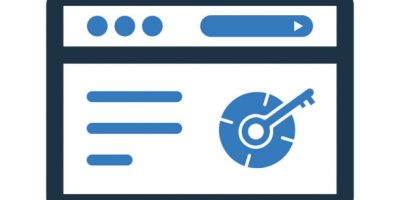A Customer Journey Map is a visual representation that shows a website visitor’s journey from entering to leaving the website. It also includes all their interactions with the website on the way.
Mapping customer journeys will not only help you understand how visitors use your website, but it will also reveal the steps they take to complete specific tasks. It can also identify any pain points and show whether they can be overcome them. That is a good goal.
What is Customer Experience Optimization
Customer journey optimization is a process that connects and maps customer interactions across multiple touchpoints to guide or influence an end-to-end user experience.
Teams are focused on optimizing the customer journey and building trust with customers. In today’s IT-centric economy, it is essential to integrate different channels into a seamless journey for customers.
Omnichannel Customer Experience (CX) allows for the optimization of customer journeys, as customers can utilize multiple channels to meet the same need or interact with the company. To remain competitive, a customer journey management strategy will help you to stay on top of your game.
How to Create a Customer Journey Diagram
While creating a map of the customer journey may seem repetitious, you will find that each map is different in terms of design and tools. Customer journeys are unique, just like your customers.
Know your customers
It is essential to have a purpose in mind before creating a journey mapping. This will help you understand who the map is for and why. Marketers can help customers define their goals by providing a better understanding of their needs and preferences.
To get these details, you will need to conduct thorough market research. Create a profile of your customer with information like age, gender, and occupation. Also include income, geography, education, and income. In this case, you’ll need to collect psychographic information on your clients. It can be harder to gather this type of data than demographic information, but it’s useful in understanding the customer’s preferences, needs, and wants.
Select your target market
Once you have created several customers, do a “deep-dive” on each of them to get a clear picture of their experiences. Begin by mapping their initial interactions with your brand.
List all the touchpoints with your customers
Each relationship between your brand and the customer it serves is important. List the various touchpoints in the customer journey. This includes everything from social media channels to paid advertising, email campaigns, third-party survey, or comments.
Determine customer behavior
Find out what they do at each touchpoint. You can improve the small links and help them move along the tunnel by breaking the journey down into individual actions.
Telling people about your creation is best done now. Understanding your customer will allow you to solve the problem.
Understand the resources you have available
A customer journey map gives you a complete picture of your business. It shows all the resources used to provide a great customer experience.
Your strategy can be used to identify touchpoints that need additional support, like customer service. Assess if the resources available are adequate to deliver a great customer experience. You can also accurately predict the impact of existing assets and new ones on your sales, maximizing ROI. You will be able to better understand the traffic on your website.
Analyze your customer journey
Analyzing the results is an important step in creating a map of the customer journey. Analyze the data to identify signs that could cause customers not to make a purchase or areas in which they might need more assistance.
You can identify the areas where you meet your customers’ needs by reviewing your final map.
Take Action
Visualizing the journey will help you to ensure that your business is always meeting the customer’s needs.
Each change you make will help to smooth out the journey, as it will solve problems for customers. A/B tests are a great way to find out which variations help your customers most in their journey.
Customer Journey Diagram Templates
Each of the four types of maps has its own benefits. You can select the best card based on your intended use.
Current State
These are the most common types of customer journey maps. These maps visualize the thoughts, emotions, and behaviors that your customers experience when they interact with your business. These are most effective when used regularly to improve customer experience.
A Day in the life
These maps show the thoughts, feelings, and behaviors that your customers experience in their daily lives, regardless of whether they are involved with your business. This model helps you gain a deeper understanding of the lives and pain points of your customers. These models are used to address unmet needs of customers before they even realize that there is a need. This type of customer journey can be used by your business to evaluate new market development strategies.
Future State
These maps show the future behaviors, thoughts and feelings of your customers in relation to your business. You will be able to see where your business fits in based on the current experience of your customers. You can use them to set your strategic goals and express your vision.
Service Blueprint
These maps begin with a simplified version of the map shown above. They then turn to the elements that are responsible for delivering this experience, such as people, policies and technology. These tools are most useful for identifying the root causes behind current customer journeys, or identifying the steps required to achieve desired customer journeys in the future.
How to Optimize the Customer Experience
The best way to retain customers is by focusing on their experience. What can we do about this?
Here are five tips to improve the customer journey by using the latest technology and best customer experience.
Take a look at this:
Map and analyze the customer journey
You need to know where you stand and where improvements can be made. This is known as “mapping”, and in customer journey optimization it provides a baseline to compare future efforts.
You’ll now want to combine customer engagement metrics with a better understanding of each step of the customer journey. It is important to keep in mind that you should be looking at the situation from the perspective of the customer and not the internal business.




















Comments